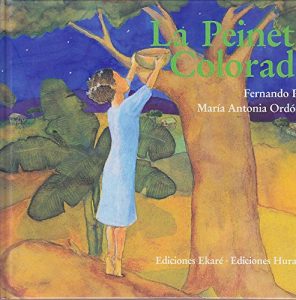Retells the life of the legendary African American hero who raced against a steam drill to cut through a mountain.
19th Century
The Lynching Of Louie Sam
Between 1882 and 1968 there were 4,742 lynchings in the United States. In Canada during the same period there was one–the hanging of American Indian Louie Sam. The year is 1884, and 15-year-old George Gillies lives in the Washington Territory, near the border with British Columbia. In this newly settled land, white immigrants have an uneasy relationship with the Native Indians. When George and his siblings discover the murdered body of a local white man, suspicion immediately falls on a young Indian named Louie Sam. George and his best friend, Pete, follow a lynch mob north into Canada, where the terrified boy is seized and hung. But even before the deed is done, George begins to have doubts. Louie Sam was a boy, only 14–could he really be a vicious murderer? Were the mob leaders motivated by justice, or were they hiding their own guilt? As George uncovers the truth–implicating Pete’s father and other prominent locals–tensions in the town rise, and he must face his own part in the tragedy. But standing up for justice has devastating consequences for George and his family. Inspired by the true story of the lynching, recently acknowledged as a historical injustice by Washington State, this powerful novel offers a stark depiction of historical racism and the harshness of settler life. The story will provoke readers to reflect on the dangers of mob mentality and the importance of speaking up for what’s right.
I Am Sacajawea, I Am York
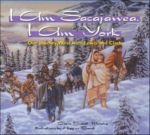
When Lewis and Clark’s Corps of Discovery set out in the spring of 1804, they had chosen to go on an unprecedented, extremely dangerous journey. It would be the adventure of a lifetime. Unlike others in the group, two key members did not choose to join the hazardous expedition: York, Clark’s slave, and Sacajawea, considered to be the property of Charbonneau, the expedition’s translator. The unique knowledge and skills Sacajawea and York had were essential to the success of the trip. The dual stories of these two outsiders, who earned their way into the inner core of the Lewis and Clark Expedition, shed new light on one of the most exciting and important undertakings in American history.
The Season Of Rebels And Roses
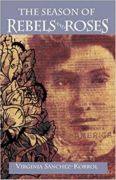
Ranging from Puerto Rico to Cuba and the United States, this engaging novel for teens follows historical figures that were instrumental in the fight for self-determination in Puerto Rico. Addressing issues that remain relevant today racism, women’s rights and Puerto Rico’s status. The Season of Rebels and Roses also sheds light on women’s involvement in their nation’s liberation and their own.
Fiona’s Lace

“Fiona and her family moved from Ireland to Chicago to begin a new life. Yet, when the family is struck with misfortune, will Fiona’s lace help save them?”–
See the review at WOW Review, Volume 8, Issue 2
Unspoken
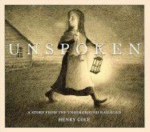
In this wordless picture book, a young Southern farm girl discovers a runaway slave hiding behind the corn crib in the barn and decides to help him.
Join the discussion of Unspoken as well as other books centered around relocation on our My Take/Your Take page.
Saint-Saens’s Danse Macabre [with Audio Cd]
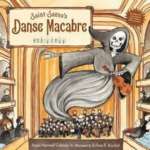
A fictionalized account of how the composer Saint-Seans concieved of and wrote Danse Macabre.
The Serpent Came To Gloucester
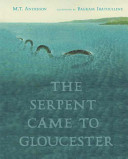
Drawing on a true story, an award-winning author and illustrator present a picture-book tribute to the beauty and mystery of the ocean, and to the mesmerizing creatures that may frolic there.It came from the sea, from the lonely sea,It came from the glittering sea.In a small Massachusetts fishing village in August of 1817, dozens of citizens claimed to have seen an enormous sea serpent swimming off the coast. Terrified at first, the people of Gloucester eventually became quite accustomed to their new neighbor. Adventure seekers came from miles around to study the serpent and aggressively hunt it down, but the creature eluded capture. The Gloucester sea serpent was then, and remains now, a complete mystery. Reviving the rhythms and tone of a traditional sea chanty, M.T. Anderson recounts this exhilarating sea adventure through the eyes of a little boy who secretly hopes for the serpent’s survival. The author’s captivating verse is paired with Bagram Ibatoulline’s luminous paintings, created in the spirit of nineteenth-century New England maritime artists.
Uncommon Traveler: Mary Kingsley In Africa
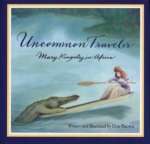
In 1870, an eight-year-old girl named Mary Kingsley lived in a small house on a lonely lane outside London, England. Her mother was bedridden and her father was rarely home. Mary did not go to school. She served as housekeeper, handyman, nursemaid, and servant, for years. In 1893 Mary traveled to West Africa and proceeded to embark on an astonishing journey of discovery. In her high-necked blouse, long skirt, and Victorian boots, she endured the brutal heat and hardships of Africa, and thrived

